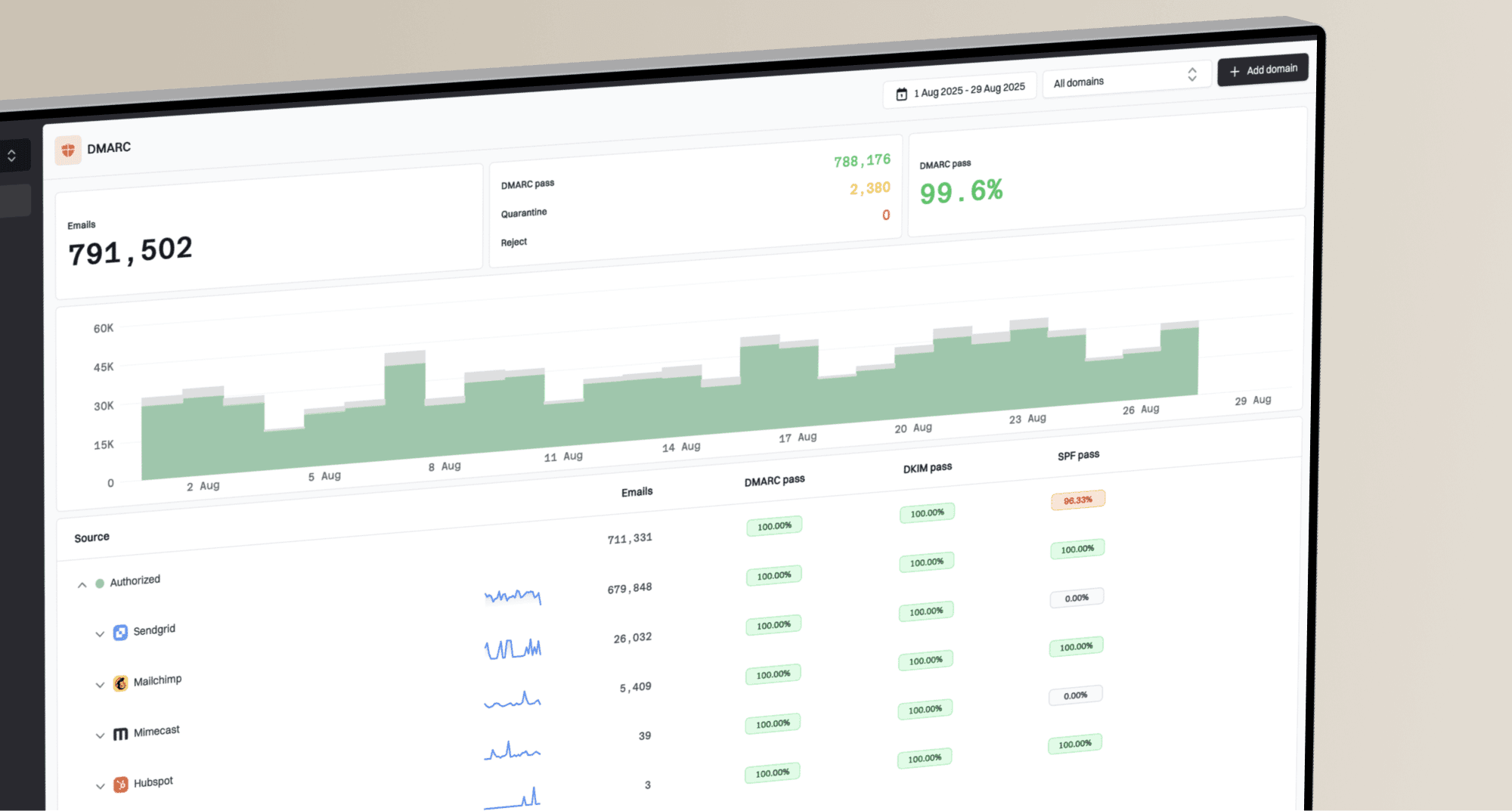Why are Yahoo and AOL not showing in my Everest seed list?

Matthew Whittaker
Co-founder & CTO, Suped
Published 25 May 2025
Updated 5 Nov 2025
7 min read

 Yahoo and
Yahoo and  AOL addresses. This can be particularly concerning during peak sending seasons like Black Friday, when every inbox placement counts.
AOL addresses. This can be particularly concerning during peak sending seasons like Black Friday, when every inbox placement counts. Yahoo or
Yahoo or  AOL in your seed list results doesn't always mean your emails are being blocked. Sometimes, it's related to how the deliverability platform processes and displays data, especially when ISPs make changes on their end. It's helpful to understand how accurate seedlists are in general.
AOL in your seed list results doesn't always mean your emails are being blocked. Sometimes, it's related to how the deliverability platform processes and displays data, especially when ISPs make changes on their end. It's helpful to understand how accurate seedlists are in general. Yahoo or
Yahoo or  AOL, it could lead to incomplete reporting without necessarily indicating a broad delivery failure for your actual subscriber list.
AOL, it could lead to incomplete reporting without necessarily indicating a broad delivery failure for your actual subscriber list. Yahoo and
Yahoo and  AOL's absence from seed lists is the ongoing consolidation of their services.
AOL's absence from seed lists is the ongoing consolidation of their services.  Yahoo and
Yahoo and  AOL (both part of
AOL (both part of  Oath, now
Oath, now  Verizon Media, then
Verizon Media, then  ATT) have been merging their email platforms and reporting mechanisms. This means that a deliverability platform might now show
ATT) have been merging their email platforms and reporting mechanisms. This means that a deliverability platform might now show  Yahoo and
Yahoo and  AOL as a single combined entity in their reports, rather than two separate lines. This is a common phenomenon that we've seen happen with
AOL as a single combined entity in their reports, rather than two separate lines. This is a common phenomenon that we've seen happen with  Microsoft (Hotmail, Outlook, Live, MSN) and
Microsoft (Hotmail, Outlook, Live, MSN) and  Google (Gmail, Google Workspace).
Google (Gmail, Google Workspace). Yahoo and
Yahoo and  AOL addresses that the platform is now grouping. This could lead to a display quirk where these specific domains seem to be 'missing' but are actually consolidated under a different or combined reporting category. It's a reporting issue rather than a delivery issue.
AOL addresses that the platform is now grouping. This could lead to a display quirk where these specific domains seem to be 'missing' but are actually consolidated under a different or combined reporting category. It's a reporting issue rather than a delivery issue. Yahoo and
Yahoo and  AOL subscribers.
AOL subscribers. Yahoo and
Yahoo and  AOL reporting into a single category. Your emails might be delivered, but the dashboard displays them under a combined metric.
AOL reporting into a single category. Your emails might be delivered, but the dashboard displays them under a combined metric. Yahoo or
Yahoo or  , can signify underlying reputation or configuration issues. You might find more information on how to fix problems receiving AOL Mail.
, can signify underlying reputation or configuration issues. You might find more information on how to fix problems receiving AOL Mail. Yahoo and
Yahoo and  addresses. Look for deferrals, bounces (especially soft bounces), or any specific error codes. This is the most reliable way to determine if emails are truly failing to reach these domains. You can also review if Yahoo and AOL emails are bouncing.
addresses. Look for deferrals, bounces (especially soft bounces), or any specific error codes. This is the most reliable way to determine if emails are truly failing to reach these domains. You can also review if Yahoo and AOL emails are bouncing. Yahoo and
Yahoo and  use internal proprietary blocklists, getting listed on common public blacklists can also affect your reputation with them. Monitoring your IP and domain against major blocklists is a proactive step.
use internal proprietary blocklists, getting listed on common public blacklists can also affect your reputation with them. Monitoring your IP and domain against major blocklists is a proactive step. Yahoo and
Yahoo and  results into one category.
results into one category. Yahoo and
Yahoo and  addresses.
addresses. Yahoo and
Yahoo and  domains. For instance, Iterable’s documentation outlines how to troubleshoot common deliverability issues, including checking bounce reports.
domains. For instance, Iterable’s documentation outlines how to troubleshoot common deliverability issues, including checking bounce reports. AOL, like
AOL, like  Yahoo, has strict authentication requirements.
Yahoo, has strict authentication requirements.v=spf1 include:_spf.example.com ~all
 Yahoo and
Yahoo and  requires a dual approach: understanding platform reporting nuances and verifying actual email delivery. By systematically checking your ESP logs, confirming ISP reporting changes, and ensuring robust email authentication, you can gain clarity on why these domains might be missing and take appropriate action to secure your inbox placement.
requires a dual approach: understanding platform reporting nuances and verifying actual email delivery. By systematically checking your ESP logs, confirming ISP reporting changes, and ensuring robust email authentication, you can gain clarity on why these domains might be missing and take appropriate action to secure your inbox placement.